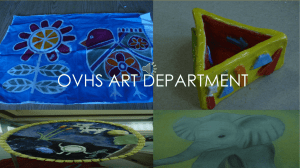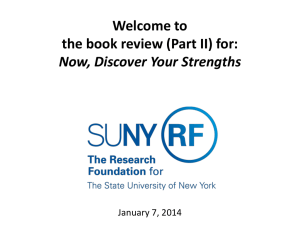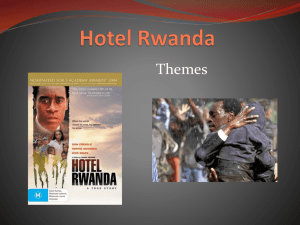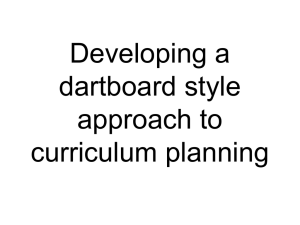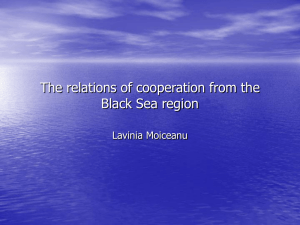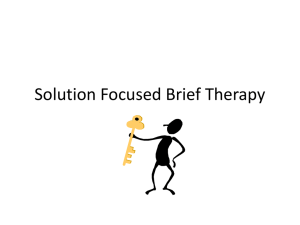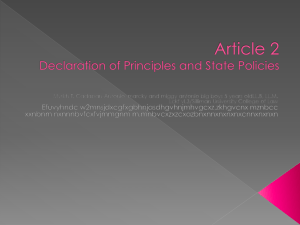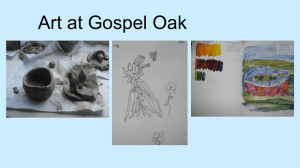K to 12 ART CURRICULUM - E
advertisement
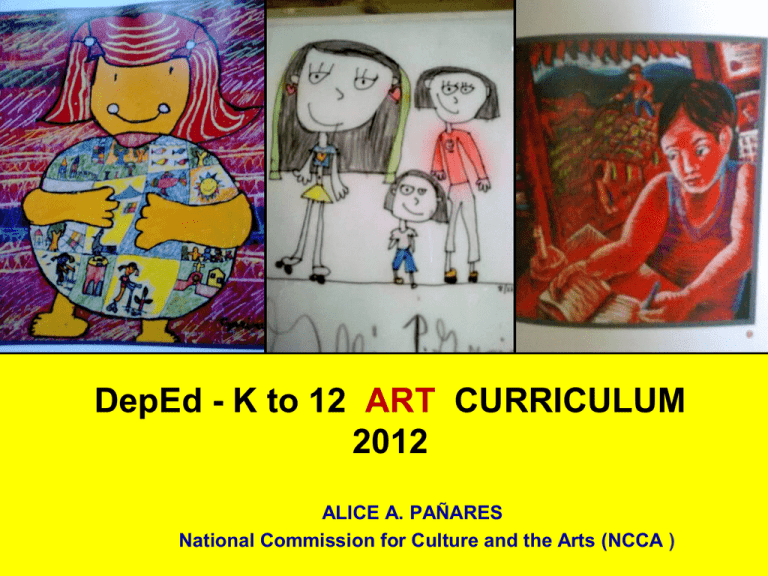
DepEd - K to 12 ART CURRICULUM 2012 ALICE A. PAÑARES National Commission for Culture and the Arts (NCCA ) What is the EXPECTATION for GRADE 1 ART? At the end of Grade 1: The learner demonstrates BASIC UNDERSTANDING of the fundamental processes in ART DRAWING PAINTING PRINTMAKING SCULPTURE & NEW MEDIA through CREATING OBSERVING & APPRECIATING RESPONDING to ARTWORKS S A K Grade 1 ART – in mother tongue • Is only ONCE A WEEK for 40 minutes, so TIME is precious! The teacher must PLAN the lesson PREPARE materials PERSIST in holding the ART CLASS and not GIVE IT UP for other school activities! LET US NOT CHEAT OUR CHILDREN! Children LOVE ART! Why? The FOCUS in ART is the CHILD. K to 12 ART CURRICULUM The K to 12 ART Curriculum * is child – centered (art production) • develops the higher order thinking skills (art criticism) • emphasizes the child’s Filipino identity through an appreciation of our rich Philippine culture and heritage and traditions. (art history and art appreciation) K to 12 ART CURRICULUM WHY DO CHILDREN NEED ART? Art develops the child’s creativity and artistic expression, his cultural and visual literacy which is most needed in the 21st century, which is a multi-media world. Art develops the child’s multiple intelligences: SPATIAL INTELLIGENCE - when he imagines and translates his thoughts, feelings into visuals: drawings,& paintings KINAESTHETIC INTELLIGENCE – when he uses his eyes, hands, arms, body to carve, shape, weave, saw, construct, mix, blend. LOGICAL & VERBAL INTELLIGENCE – when he connects the art he sees to the history of the Philippines and the world. When he can appreciate, assess and talk about the artistic merits of his work and the work of others. K to 12 ART CURRICULUM CONTENT OF ART Every work of ART, has elements on which different principles ar applied whatever process or MEDIA is used by the artist. ELEMENTS of ART: line, color, shape, texture. PRINCIPLES: rhythm, balance, unity repetition, contrast, proportion, emphasis, harmony PROCESSES: drawing, painting, printmaking, sculpture, & crafts, mixed media K to 12 ART CURRICULUM – CONTENT of ART Elements (alphabet) of Art: Line, Color, Shape and Texture Shape Color Texture Line K to 12 ART CURRICULUM – CONTENT of ART Principles of Art: (what we do with the elements) Rhythm, balance, repetition, unity, proportion, emphasis, contrast & harmony Balance Repetition Rhythm K to 12 ART CURRICULUM – CONTENT of ART Processes or MEDIA of Art: (how we create art) drawing, painting, printmaking, sculpture, & mixed media (local, natural indigenous or recycled materials preferred) Painting Drawing Sculpture Mixed Media K to 12 ART CURRICULUM – APPROACHES in TEACHING ART The art ELEMENTS, PRINCIPLES and PROCESSES are taught in a SPIRAL PROGRESSION from the simple to the more complicated from K to 12 to FOLLOW the CHILD’S DEVELOPMENTAL GROWTH. ART Lessons are performance-based, project-based, HANDS-ON & FUN! to ART 12 ART CURRICULUM K toK12 CURRICULUM – THEMES in Art THEMES in ART for the different grade levels follow the child’s social awareness & development ART is integrated with other subjects. (Science, AP, Languages, Math, TLE, Values) • • • K , Gr. 1 - Myself, my family and my school Grade 2 - My Neighborhood, my community Grade 3 - My province, my region Grade 3 Grade 1 Grade 2 K toK12 CURRICULUM – THEMES in Art to ART 12 ART CURRICULUM Grade 4 - Different communities in the Philippines Grade 5 - History of the Philippines, our Ancestors K to 12 ART CURRICULUM – THEMES in Art Grade 6 The Philippines in the present times. Grade 7 (HS) The three island groups of the Philippines: Luzon, Visayas and Mindanao KKto – THEMES in Art to12 12 ART ARTCURRICULUM CURRICULUM Grade 8 Our Asian Neighbors KKto – THEMES in Art to12 12 ART ARTCURRICULUM CURRICULUM Grade 9 The Western countries KKto – THEMES in Art to12 12 ART ARTCURRICULUM CURRICULUM Grade 10 Middle East, Africa, the Americas KKto – THEMES in Art to12 12 ART ARTCURRICULUM CURRICULUM Grade 11- : ART CAREERS: design, mass media, I.T. Fashion design Product design Book illustration Digital animation Game development Graphic design K to 12 ART CURRICULUM – THEMES in Art Grade 12 artrelated CAREERS Interior design (Locsin) Fashion Design (Monique Lhuillier) photography (de Leon) Furniture Design (Kenneth Cobonpue) Gr 11, 12:Learning by APPRENTICESHIP: the student is mentored by an artist, a craftsmaster (furniture, jewelry, weaving, clothes designer, photography, video & TV production) or s/he goes to a private shop to assist & learn: animation, cartooning, making digital games, display design, interior design, book illustration, magazine layout, events & festival organizing, advertising, film production……. NEW SKILLS of THE 21ST CENTURY so our students can WORK after Gr 12. GRADE 1 CURRICULUM (Teaching Guide and Learning Guide for Students) 1ST QTR: Introduction to ART, DRAWING of self & family members friends, people in the neighborhood animals and plants houses and buildings 2nd QUARTER Introduction to PAINTING and COLORS of NATURE and MAN-MADE THINGS discovering colors in plants, flowers, fruits, fishes, animals creating colors to paint a PAROL,or Maguindanao LIKUS my neighborhood, and my imaginary world 3rd QUARTER discovering PRINTMAKING and other MEDIA PRINTS using fingers, hand printing using OBJECTS from NATURE printing using FOUND, RECYCLED OBJECTS 4TH QUARTER introduction to CRAFTS, SCULPTURE CONSTRUCTING a 3D FIGURE from recycled materials PAPER MACHE animals “TAKA” clay containers “PALAYOK, MANGKOK” fish and butterfly mobiles “SABIT-SABIT” for a fiesta ART with SCIENCE 1. drawing LINES (science – lines show MOTION) 2. drawing my face; full body ( care and respect for different parts of the body) 3. painting flowers, plants, animals (care for nature and the environment) 4. crafts using recycled materials learning to reuse, reduce, recycle) etc… An ART LESSON has: 1.MOTIVATION activity or SENSORY EXPERIENCES to excite the students 2. VISUALS, MATERIALS, PROCESSES, STEPS to follow 3.“MAGIC TIME- DOING MY ART” allow the child to EXPRESS HIS OWN THOUGHTS & FEELINGS 4. TALKING/THINKING TIME – looking and commenting on my art and art of others A TEACHER OF ART : 1. must have DONE BASIC ART PROCESSES (draw, paint, carve, print, design) 2. respects the child: each child is UNIQUE! Accept work of everyone and DISPLAY all works. 3. encourages the CREATIVITY of the child; allow questions, mistakes, trial & errror, experimentation, allows child to try and try again.. 4. awards INVENTORS & INNOVATORS…. sometimes they are the “weird, “pasaway” kids EINSTEIN the great scientist said: “IMAGINATION is greater than KNOWLEDGE!” We are preparing our STUDENTS for the FUTURE, which we can only IMAGINE…so we cannot teach only the way we were taught. We must KEEP ON LEARNING… for the world is changing! Instill PRIDE IN THE PILIPINO! Tell them about our great ARTISTS. We are known for our good singers, dancers, animators, indigenous artists. Invite local artists to your class. Instill PRIDE in the PHILIPPINES! Show or visit our beautiful beaches, caves, sceneries, heritage buildings & sites. Talk about them. Take pictures. Through ART, the Filipino child becomes creative, innovative, productive and proud to be FILIPINO, proud of his province and the Philippines, using his talents for others & his country!
